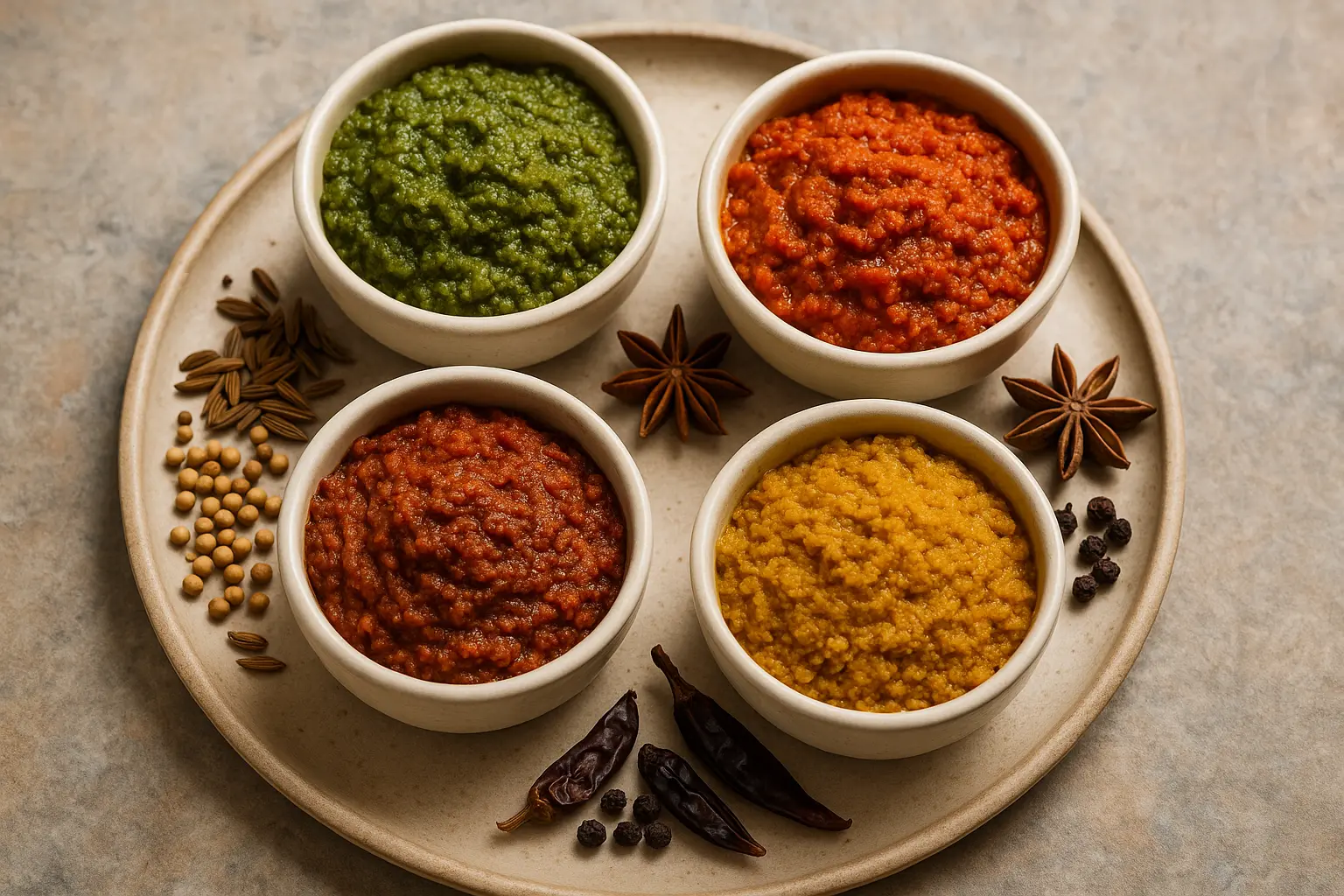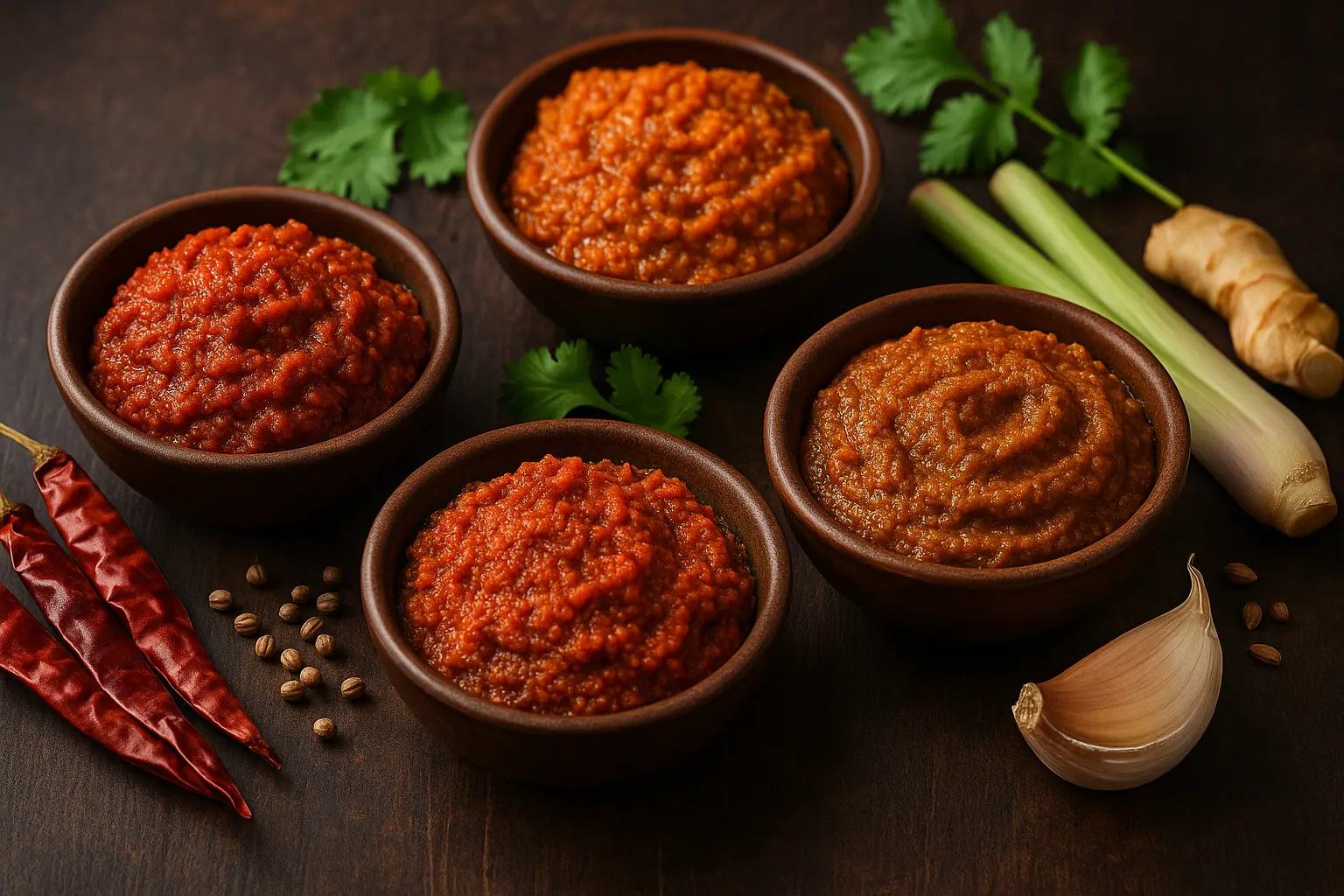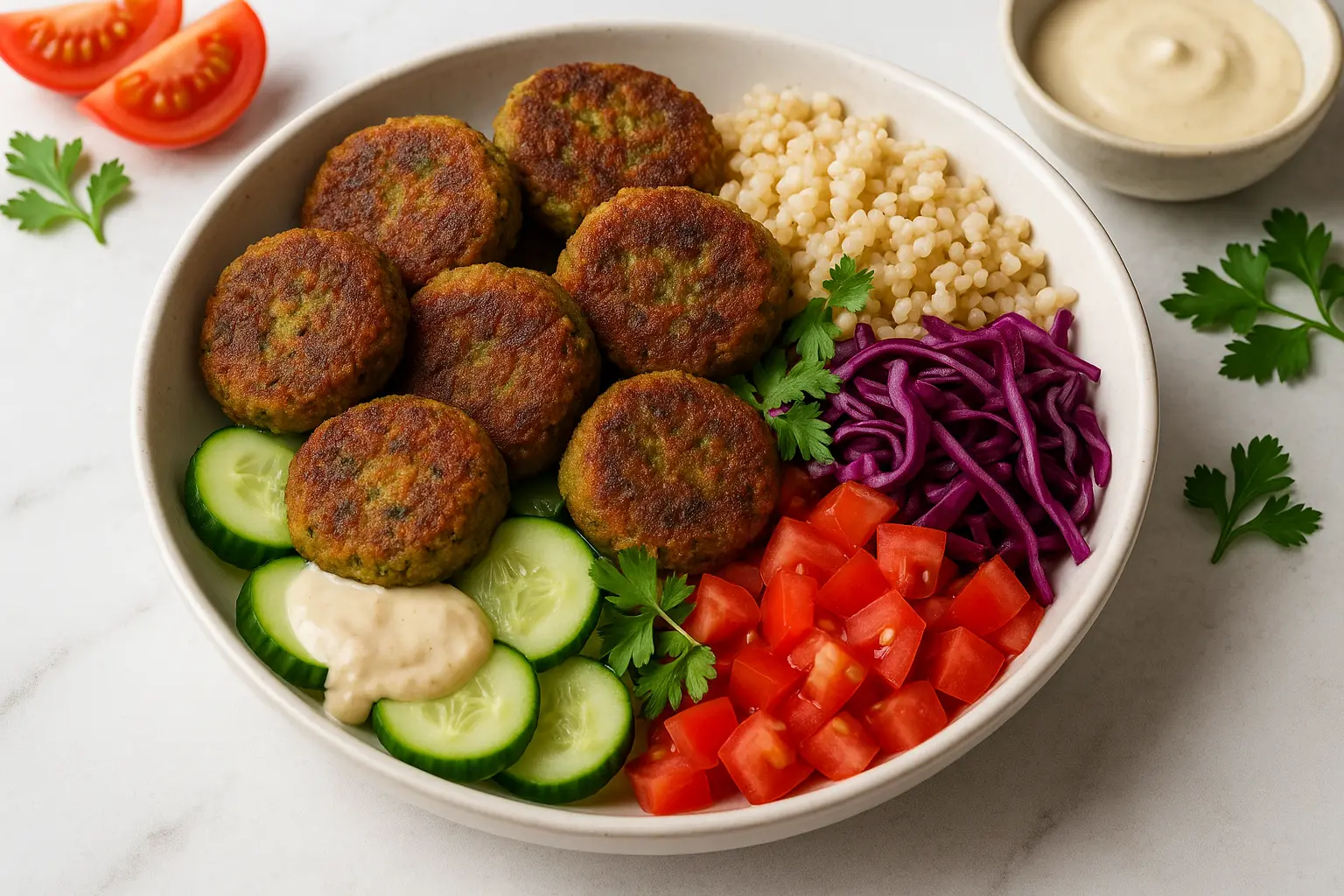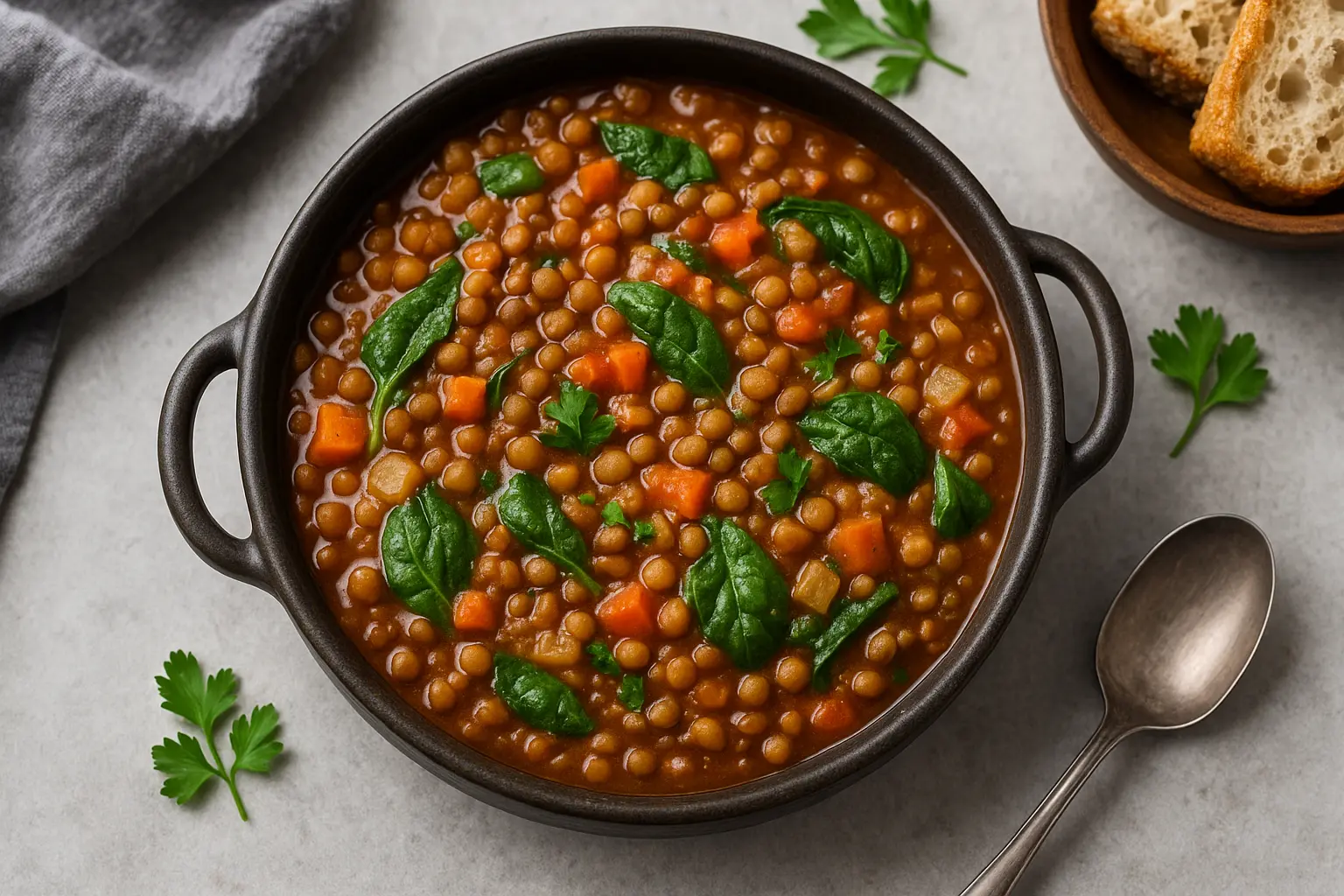Every cuisine has its foundation flavors—the essence that transforms a handful of basic ingredients into something remarkable. While dry spice blends are well known (think garam masala or herbes de Provence), spice pastes are often overlooked outside professional kitchens. Yet they are the real secret to depth of flavor.
Spice pastes bring together aromatics, herbs, spices, and sometimes oils or acids into a concentrated form. Unlike powders, pastes carry freshness, oils, and volatile compounds that deepen as they cook. They can be frozen, refrigerated, or preserved in oil for weeks—making them perfect pantry companions for home cooks.
From Indian curry pastes to Thai curry bases, Mexican adobos to Middle Eastern chermoula, these condiments let you cook globally without relying on store-bought jars. Best of all, most can be made with accessible ingredients and adapted for dietary preferences.
In this guide, we’ll explore how to make global spice pastes at home, their culinary uses, preservation tips, and detailed recipes for multiple cuisines.

The Global Role of Spice Pastes
To appreciate their versatility, let’s travel across continents:
- India: Curry pastes made with onion, ginger, garlic, tomato, and spices are the foundation of countless gravies. Variants like vindaloo paste or korma paste change the personality of the dish instantly.
- Thailand: Fiery green and red curry pastes, made with chilies, lemongrass, galangal, and kaffir lime, form the heart of Thai cooking.
- Mexico: Adobo, achiote, and mole pastes blend chilies, seeds, nuts, and spices into rich sauces and marinades.
- Middle East & North Africa: Harissa (Tunisia) and chermoula (Morocco) deliver smoky heat or herbal zest to stews, fish, or grilled vegetables.
- Italy: Pesto is essentially a spice paste—herbs, garlic, nuts, and oil blended into a punchy condiment.
- Indonesia & Malaysia: Sambal and rendang bases bring complex chili and spice mixes that simmer into unforgettable curries.
No matter where you cook, mastering a few key spice pastes gives you instant access to global flavors.
Core Elements of a Spice Paste
Across cuisines, spice pastes share similar building blocks:
- Aromatics: Garlic, onion, shallot, ginger, lemongrass.
- Spices: Whole or ground—cumin, coriander, cinnamon, cardamom, turmeric.
- Heat: Chilies (fresh, dried, roasted).
- Herbs: Cilantro, basil, parsley, mint.
- Acid: Vinegar, lime, tamarind, yogurt.
- Fat: Oil, coconut milk, or nuts for richness.
- Salt: Sometimes fish sauce or soy sauce for umami.
Once blended, they act as concentrated flavor capsules. A spoonful in hot oil can start a curry; a smear can season tofu or vegetables before roasting.
Tools You’ll Need
- Blender / Food Processor: Essential for smooth pastes.
- Mortar & Pestle: Traditional method for small batches; brings out oils slowly.
- Spice Grinder: For grinding seeds fresh.
- Storage Jars: Glass jars with airtight lids.
- Freezer trays: For portioned storage (ice cube trays are ideal).
Regional Spice Paste Recipes
Below, you’ll find detailed, authentic recipes for 10+ global spice pastes you can make at home.
1. Indian Basic Curry Paste
Ingredients:
- 2 onions, chopped
- 4 cloves garlic
- 1-inch ginger
- 2 tomatoes, chopped
- 2 tsp cumin seeds
- 1 tsp coriander seeds
- 1 tsp turmeric
- 1 tsp chili powder
- 2 tbsp oil
Method:
- Toast cumin and coriander until aromatic, grind to powder.
- Fry onion, garlic, ginger until golden.
- Add tomatoes, spices, and cook down.
- Blend to smooth paste.
Uses: Base for dals, curries, biryanis.
2. Vindaloo Paste (Goa, India)
Ingredients:
- 6 dried red chilies, soaked
- 2 tsp cumin seeds
- 1 tsp mustard seeds
- 6 cloves garlic
- 1-inch ginger
- 2 tbsp vinegar
- 1 tsp cinnamon
- 1 tsp cloves
- 1 tsp turmeric
Method:
- Grind all into a smooth paste with vinegar.
- Store in oil.
Uses: Classic fiery vindaloo curry, marinades for tofu or vegetables.
3. Thai Red Curry Paste
Ingredients:
- 6 dried red chilies, soaked
- 2 lemongrass stalks
- 1-inch galangal
- 4 garlic cloves
- 1 shallot
- 1 tsp coriander seeds
- 1 tsp cumin seeds
- 1 kaffir lime leaf
- 1 tbsp oil
Method:
Pound or blend all until smooth.
Uses: Stir-fry with coconut milk for red curry; use as a stir-fry base.
4. Thai Green Curry Paste
Ingredients:
- 10 green chilies
- 2 lemongrass stalks
- 1-inch galangal
- 3 garlic cloves
- 2 shallots
- 1 tsp coriander root (or cilantro stems)
- 1 kaffir lime zest
- 1 tsp cumin seeds
Uses: Thai green curry, soups, marinades.
5. Mexican Adobo Paste
Ingredients:
- 4 dried guajillo chilies, soaked
- 2 cloves garlic
- 1 tsp cumin seeds
- 1 tsp oregano
- 2 tbsp vinegar
- 1 tsp smoked paprika
Uses: Marinades, enchilada sauce, taco seasoning.
6. Mexican Mole Starter Paste
Blends chocolate, nuts, chilies, and spices—complex and layered. Used as the foundation for mole sauces.
7. Tunisian Harissa
Ingredients:
- 8 dried red chilies, soaked
- 4 garlic cloves
- 1 tsp coriander seeds
- 1 tsp cumin seeds
- 2 tbsp olive oil
- 1 tsp lemon juice
Uses: Mix into couscous, soups, sandwiches.
8. Moroccan Chermoula
Ingredients:
- 1 cup fresh cilantro
- ½ cup parsley
- 3 garlic cloves
- 1 tsp paprika
- 1 tsp cumin
- 2 tbsp lemon juice
- 2 tbsp olive oil
Uses: Marinade for roasted veggies, grilled tofu, or chickpea stew.
9. Italian Pesto
Ingredients:
- 2 cups fresh basil
- ¼ cup pine nuts (or cashews)
- 3 garlic cloves
- ¼ cup olive oil
- 2 tbsp nutritional yeast (vegan cheese flavor)
Uses: Pasta, bread spread, salad dressing.
10. Indonesian Sambal Oelek
Ingredients:
- 12 red chilies
- 3 garlic cloves
- 2 tbsp vinegar
- 1 tsp sugar
- 1 tsp salt
Uses: Condiment for noodles, rice, or stir-fries.
11. Malaysian Rendang Base Paste
Aromatic mix of lemongrass, galangal, garlic, ginger, chilies, turmeric. Used to cook coconut-based curries that simmer for hours.
12. Ethiopian Berbere Paste
Ingredients:
- 2 tbsp berbere spice blend
- 3 garlic cloves
- 1-inch ginger
- 2 tbsp olive oil
- 1 tbsp tomato paste
Uses: Lentil stews, roasted vegetables.
Preservation and Storage
- Refrigeration: Up to 2 weeks in airtight jars topped with oil.
- Freezing: Freeze in ice cube trays, store for 3–4 months.
- Oil Preservation: Cover surface with olive oil; prevents mold.
Creative Uses of Spice Pastes
- Marinades: Coat tofu, tempeh, or veggies.
- Soups: Stir into broths for instant flavor.
- Sandwiches: Spread harissa or pesto on bread.
- Salads: Thin pastes into dressings with yogurt or lemon.
- Quick Meals: Stir fry paste with noodles or rice for a 15-minute meal.
Tips for Beginners
- Start small: make half-batches to test flavor.
- Adjust chili levels for heat tolerance.
- Always toast dry spices before blending.
- Use fresh herbs for vibrancy.
- Label jars with date & cuisine.
Conclusion: Build Your Global Flavor Pantry
Making your own spice pastes puts global flavors at your fingertips. Instead of reaching for premade jars, you control freshness, spice levels, and ingredients. From Thai curries to Mexican tacos, North African stews to Italian pastas, a little paste goes a long way.
Cooking globally at home doesn’t require complex skills—just a blender, spices, and curiosity. Start with one recipe, freeze some for later, and you’ll always have a world of flavors ready for weeknight cooking.
Leave a comment
Your email address will not be published. Required fields are marked *




















